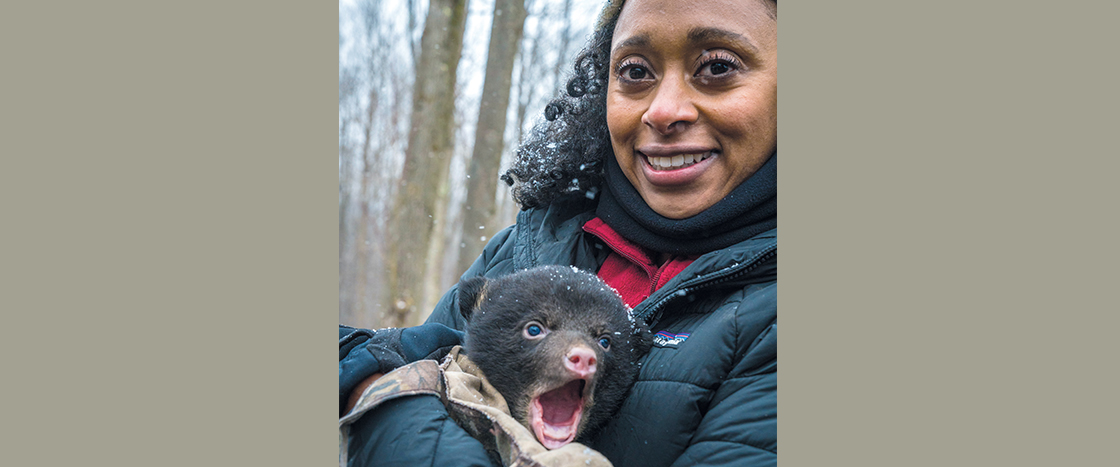Rae Wynn-Grant hikes through the woods. She sees a hole in the ground under the snow. There’s a mother bear inside. She’s hibernating. She’ll sleep until spring. Her cubs are snuggled next to her. Wynn-Grant is there to check on the cubs.
She crawls into the den. She gives the mama bear some medicine. It will keep her asleep. Wynn-Grant takes out the wiggly cubs. It’s cold out, so she tucks the babies into her coat. Her body heat keeps them warm. She gives each cub a checkup. She listens to their heartbeats.
Rae Wynn-Grant hikes through the woods. She sees a hole in the ground under the snow. There’s a mother bear inside. She’s hibernating. She’ll sleep until spring. Her cubs are snuggled next to her. Wynn-Grant is there to check on the cubs.
She crawls into the den. She gives the mama bear some medicine. It will keep her asleep. Wynn-Grant takes out the wiggly cubs. It’s cold out, so she tucks the babies into her coat. Her body heat keeps them warm. She gives each cub a checkup. She listens to their heartbeats

